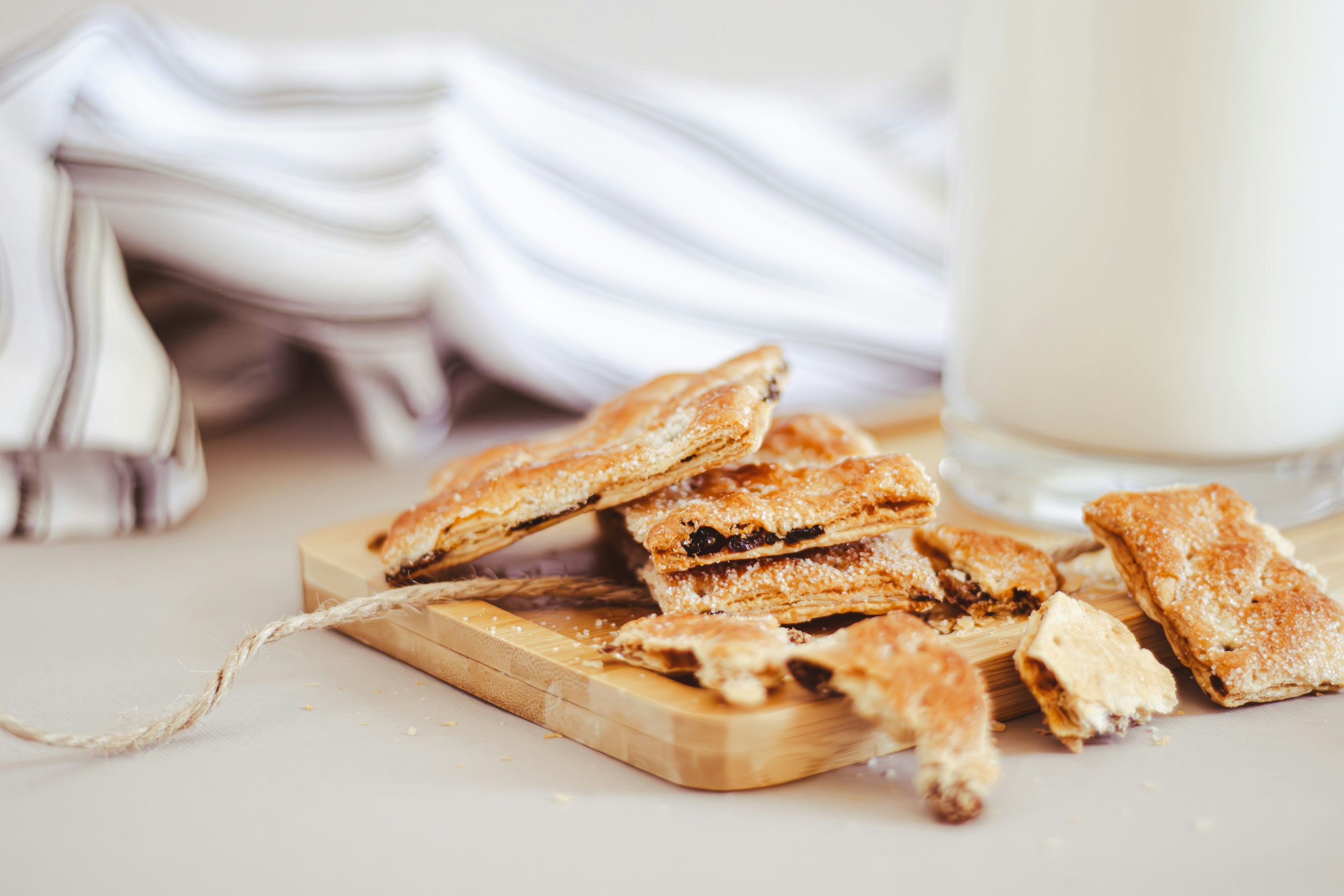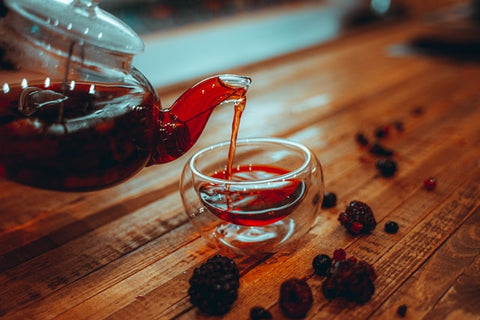What to Do with Pulp from Juicing: 17 AWESOME Ways to Reuse Fruit Pulp
March 01, 2024
Juicing is a fantastic way to pack a punch of vitamins and minerals into your diet, but what about the leftover pulp?
If you've been discarding it, you're missing out on a world of culinary opportunities!
This article delves into innovative recipes that transform fruit pulp into culinary delights.
Imagine turning your morning juice byproduct into delectable cupcakes, savory crackers, or even nourishing dog food.
We're here to guide you through the endless possibilities, ensuring your juicing routine is healthy, waste-free, and full of discovery.
1. Crackers
Fruit pulp adds a subtle sweetness and a moist texture to crackers, making them a delightful pairing with cheeses, dips, or enjoyed on their own. Besides, the fiber content in the pulp contributes to a more fulfilling snack option.
You can create a range of flavors and textures that complement your other ingredients by experimenting with different types of fruit pulp, such as apples, pears, or bananas.
Pro tip: Use a cold-press juicer like Hurom H400 that squeezes your fruits and veggies completely, leaving dry pulp. That way, your crackers can keep that crunchy taste.
Recipe:
- 1 cup fruit pulp
- 1 cup whole wheat flour
- 1/4 cup flaxseeds
- 1/2 tsp salt
- 2 tbsp olive oil
- 1/4 cup water (adjust as needed)
Combine all ingredients in a bowl, mixing until a dough forms. Roll out the dough on a floured surface to your desired thickness. Cut into shapes and place on a parchment-lined baking sheet. Bake at 350°F (175°C) for 20-30 minutes or until crispy. Let cool before serving.
2. Fruit Leather
Transforming leftover fruit pulp into homemade fruit leather is an ingenious way to reduce waste and create a healthy, portable snack. The pulp's concentrated flavors and natural sugars create a delicious fruit leather without the added sugars or preservatives in many store-bought versions. This process also preserves the fruit’s nutritional benefits, including vitamins, minerals, and phytonutrients.
Besides, you have a fun and engaging way to involve kids in the kitchen, teaching them about healthy snacking and the importance of food sustainability.
Recipe:
- Fruit pulp (such as strawberry, mango, or peach)
- Honey (optional)
- Cinnamon (optional)
Spread a thin layer of fruit pulp on a silicone baking mat or parchment-lined baking sheet. Optionally, add a sweetener like honey or a sprinkle of cinnamon for extra flavor. Dehydrate in an oven at the lowest setting or a food dehydrator until the leather is no longer sticky to the touch. Cool, cut into strips, and roll up for a healthy, chewy snack.
3. Cheese Spread Ingredient
Using fruit pulp as an ingredient in cheese spreads introduces an unexpected flavor and color twist, elevating your cheese platters' sensory experience. The fruit pulp’s natural sweetness and acidity can beautifully complement the creaminess of cheeses.
This combination can be particularly appealing when served with crackers, crusty bread, or a unique topping for bruschetta.
Recipe:
- 1 cup of softened cream cheese or goat cheese
- 1/4 cup of fruit pulp (such as raspberry or blueberry)
- 1 tablespoon of honey
- A pinch of salt
Mix until smooth and serve with crackers or as a bagel spread.
4. Smoothies
Adding fruit pulp to smoothies is an excellent way to boost their fiber content and enhance their nutritional value without compromising on taste. Fruit pulp from ingredients like berries, mangoes, or peaches adds a burst of flavor and antioxidants. You can even use vegetable pulp such as carrot or beet to get those 5 recommended servings of fruits and veggies.
Pro tip: Consider a Hurom juicer that can help you prepare both refreshing juices and thick, soft smoothies.

Recipe:
- 1 cup fruit pulp (e.g., mango or peach)
- 1 banana
- 1/2 cup Greek yogurt
- 1 cup almond milk
- A handful of spinach
Blend all ingredients until smooth. Adjust the consistency by adding more almond milk if needed. Serve immediately for the freshest taste.
5. Soup Ingredient
Fruit pulp can add body and subtle sweetness to soups, balancing flavors, especially in vegetable-based recipes.
Recipe:
- 1 diced onion
- 2 minced garlic cloves
- 4 cups vegetable broth
- 1 cup fruit pulp (such as pumpkin or apples)
- Your choice of diced vegetables (such as carrots, celery, and potatoes)
- Spices
Sauté the onion and garlic cloves in a pot with olive oil until translucent. Add the other ingredients and. Simmer until vegetables are tender. Blend until smooth for a creamy soup, or leave as is for a chunkier version. Season with salt, pepper, and herbs to taste.
6. Baby Food
Fruit pulp is an excellent base for homemade baby food. That’s because pulp provides a smooth texture and natural sweetness that babies love, but it’s also rich in fiber and nutrients.
So both you and your baby get a much-needed win.
Recipe:
- Diced vegetables such as sweet potatoes, carrots, or peas
- Fruit pulp (such as apple, pear, or banana)
Steam the vegetables until very soft. Blend with the fruit pulp until you reach a smooth consistency. You can mix the fruit pulp directly with finely mashed or pureed vegetables for older babies and toddlers. Freeze in ice cube trays for easy, portion-controlled servings.
7. Salad Dressing
Leftover pulp can add interesting textures and flavors to salads, serving as a natural dressing base or a colorful, nutritious mix-in.
Recipe:
- 1/4 cup olive oil
- 2 tablespoons white wine vinegar
- 1 tablespoon fruit pulp (such as citrus or berry)
- 1 teaspoon honey
- Salt and pepper
For a vibrant salad dressing, whisk together all these ingredients.
Pro tip: For a salad mix-in, toss fiber-rich pulp (such as apple or cantaloupe) with greens, nuts, and your choice of protein for an added fiber boost.
8. Fruit Tea
Fruit pulp can flavor homemade teas, adding natural sweetness and fruity notes to your warm beverages. This delicious creation is a great way to satisfy your sweet tooth.
Recipe:
- 1 tablespoon of fruit pulp (such as berry or peach)
- Tea leaves
- 1 cup of water
Add the fruit pulp to a tea infuser along with your favorite tea leaves. Steep in hot water for 3-5 minutes. The fruit pulp infuses the tea with a delicate flavor and can be sweetened further if desired.
9. Veggie Burgers
Fruit pulp leftovers add moisture and subtle flavors to veggie burgers, making them more tender and palatable while boosting their nutritional content. Pulp from vegetable juice can be a great addition, too, but we'll have to write another article about that.
Recipe:
- 1 cup fruit pulp (such as green apples or raw bananas)
- 1 can drained and rinsed black beans
- 1/2 cup breadcrumbs
- 1 beaten egg
- Spices (cumin, paprika, salt, and pepper)
Combine these ingredients. Form into patties and pan-fry or bake until crispy on the outside. Serve with your favorite burger toppings.
10. Compost
Adding pulp from juicing to your compost pile introduces valuable nutrients that speed up the composting process and enrich your garden soil. That means your plants can grow faster and your garden can look more beautiful.
Recipe: Blend pulp into your compost pile, incorporating it well with other green and brown materials to promote optimal decomposition. Keep your compost moist and turn it regularly for the best results.
11. Broth
Fruit pulp can add depth and subtle sweetness to homemade broths, enhancing your favorite soups and stews. If your juicer can process vegetables, power your veggie broth with celery or carrot pulp.
Recipe: Simmer fruit pulp (such as tomato or pumpkin) with vegetables, herbs, and spices in a large pot of water for several hours. Strain the broth to remove solids. Use this flavorful base for homemade soups and stews or as a cooking liquid for grains.
12. Delicious Bread
Incorporating leftover juice pulp into homemade bread gives it a delightful moisture and subtle sweetness. Plus, you add a nutritional punch to every slice, including vitamins, minerals, and antioxidants. The texture will also be better, thanks to the extra fiber.
Pro tip: This creative twist on traditional recipes can be a great conversation starter at gatherings and a sneaky way to boost your family's fruit and vegetable intake.
Recipe:
- 2 cups of whole wheat flour
- 1 tsp baking soda
- 1/2 tsp salt
- 1/4 cup honey or maple syrup
- 1/2 cup unsweetened applesauce
- 1 cup fruit pulp (such as apple, pear, or banana)
- 2beaten eggs
For a basic juice pulp bread, combine these ingredients well, pour into a greased loaf pan, and bake at 350°F (175°C) for about 50-60 minutes or until a toothpick inserted into the center comes out clean.
13. Cupcakes
Fruit pulp can transform ordinary cupcakes into flavorful, healthy treats with an added nutritional boost. Besides, the natural sugars and flavors in the pulp reduce the need for added sweeteners.
This approach allows creative combinations, such as pumpkin pulp with cinnamon for a twist on the classic pumpkin cake or berry pulp for a fruity note. These cupcakes can be a hit at parties or a healthier snack option, appealing to both adults and children.
Recipe:
- 1 1/2 cups all-purpose flour
- 1/2 cup fruit pulp (e.g., berry or banana)
- 3/4 cup sugar
- 1/2 cup unsalted butter (softened)
- 2 eggs
- 1/2 tsp baking soda
- 1 tsp baking powder
- 1/4 tsp salt
- 1/2 cup milk
Cream together butter and sugar, then add eggs one at a time. Mix in fruit pulp. Whisk together the dry ingredients in a separate bowl and gradually add to the wet mixture, alternating with milk. Fill cupcake liners 2/3 full and bake at 350°F (175°C) for 18-22 minutes. Cool before frosting.
14. Sauce Ingredient
Incorporating fresh fruit pulp into sauces is a creative way to thicken and enrich them because:
- The natural pectin in many fruits acts as a thickening agent, contributing to a luscious, velvety texture that can elevate any dish, from savory entrees to decadent desserts.
- The subtle sweetness and acidity of the fruit pulp can balance the sauce flavors. Basically, you’re adding a layer of sophistication and brightness that can transform an ordinary recipe into a gourmet masterpiece.
Whether it's a spicy barbecue sauce or a tangy vinaigrette, adding fruit pulp will definitely make your sauces a standout feature on the dining table.
Recipe:
- 1 cup tomato sauce
- 1/2 cup fruit pulp (such as apple or pineapple)
- 1/4 cup apple cider vinegar
- 1/4 cup brown sugar
- 1 tbsp Worcestershire sauce
- Your favorite spices (such as smoked paprika, garlic powder, and onion powder)
Simmer for about 20-30 minutes until thickened. Adjust seasoning to taste.
15. Popsicles
Using fruit pulp in homemade popsicles is a fantastic way to create refreshing, nutrient-packed treats perfect for hot summer days.
And you get a healthier alternative to store-bought options that typically contain artificial flavors and high amounts of sugar, which skyrocket your blood sugar levels.
From tropical mango to tangy berry blends, the possibilities are endless.
Recipes:
- 1 cup fruit pulp (e.g., strawberry or pineapple)
- 2 cups coconut water or cold-pressed juice of choice
- 2 tbsp honey or agave syrup (optional)
Mix the fruit pulp with coconut water and sweetener if using. Pour the mixture into popsicle molds, insert sticks, and freeze for at least 4 hours or until solid.
16. Dog Food Topper
Incorporating fruit pulp into homemade dog food recipes provides your pets with much-needed vitamins, minerals, and fiber. As such, they can have a balanced and nutritious diet.
While not all fruits are safe for dogs, pulp from dog-friendly options like apples aid their digestion and support their immune health.
Pro tip: Introduce pulp gradually and in moderation to ensure your pet tolerates it.
Recipe:
- 1/2 cup fruit pulp (dog-safe, e.g., apple, blueberries, cantaloupe)
- 1 cup cooked and mashed sweet potato
- 1/2 cup cooked quinoa
Mix all ingredients thoroughly. Use as a topper for your dog's regular meal, ensuring the total amount does not exceed 10% of their daily food intake to maintain nutritional balance.
17. Homemade Energy Bars
Fruit pulp is an excellent addition to homemade energy bars, giving them natural sweetness, moisture, and a boost of fiber. You’ll also get a good source of vitamins, minerals, and antioxidants.
These homemade bars are a great alternative to commercial energy bars, which are usually packed with added sugars and preservatives.
Pro tip: Combine leftover juice pulp with ingredients like oats, nuts, seeds, and a natural binder like honey or peanut butter to create a variety of energy bars.
These energy bars can be a convenient and healthy snack, perfect for on-the-go energy needs or post-workout recovery.
Recipe:
- 1 cup fruit pulp (e.g., banana or apple pulp)
- 1 cup oats
- 1/2 cup chopped nuts (e.g., almonds or walnuts)
- 1/4 cup honey or maple syrup
- 1/3 cup peanut butter
- 1/4 cup dark chocolate chips (optional)
- 1 tsp vanilla extract
- 1/2 tsp cinnamon
Mix all the ingredients in a large bowl until well combined. Press the mixture firmly into a lined baking dish. Chill in the refrigerator for 1-2 hours, then cut into bars. Store in an airtight container in the fridge.
Wrapping Up
As you can see, your juicing journey doesn't end with the last drop squeezed from your fruits and vegetables.
The leftover pulp offers a world of culinary possibilities that extend far beyond the compost bin.
Integrating this nutrient-rich byproduct into other meals elevates their flavors and nutritional profiles.
Plus, you can embrace a more sustainable approach, minimizing food waste while maximizing taste and health benefits.




